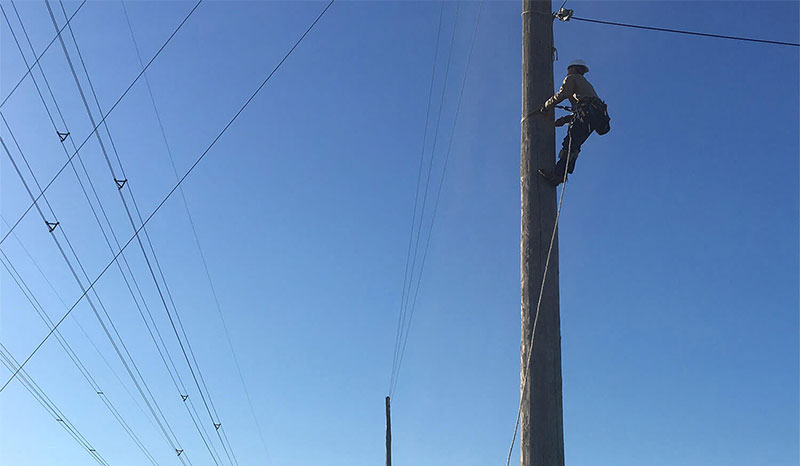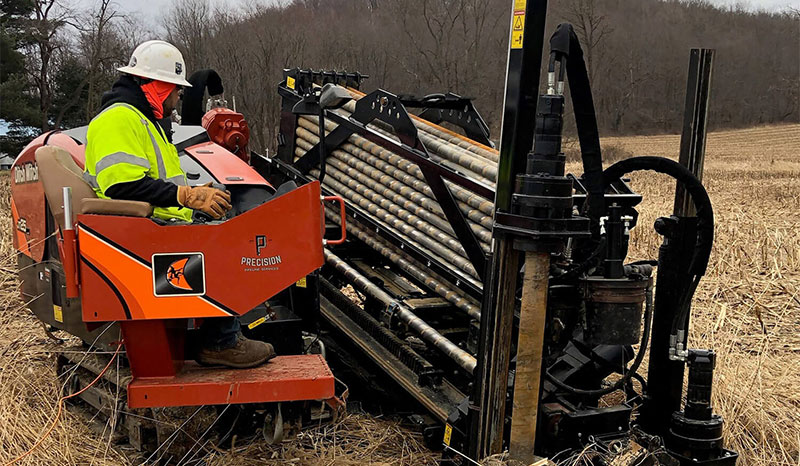Upgrades to the power grid are pivotal to provide safe and reliable electric service for communities. A robust grid helps to meet customers' digital needs, allows businesses to operate and supports economic growth. One way to strengthen the grid involves installing communication wire (a fiber optic system) that allows utilities to monitor electrical facilities and address power outages more quickly.
This technology benefits customers by:
Communication wire and associated equipment help utility operation centers, power-generating facilities and electrical substations share information with each other. The wire has a durable outer casing and includes non-metallic material to keep electricity from flowing through it.
Communication wire installation happens either above the ground or underground depending on factors such as the nature of the project and the terms of existing easements where construction needs to take place.

Crews install communication wire along high-voltage transmission lines and lower-voltage distribution lines in the utility's right-of-way.

Crews may use any of the following methods to bury plastic conduits that house communication wire. They determine which method to use based on municipal requirements, soil conditions, proximity to other buried utilities and other factors.